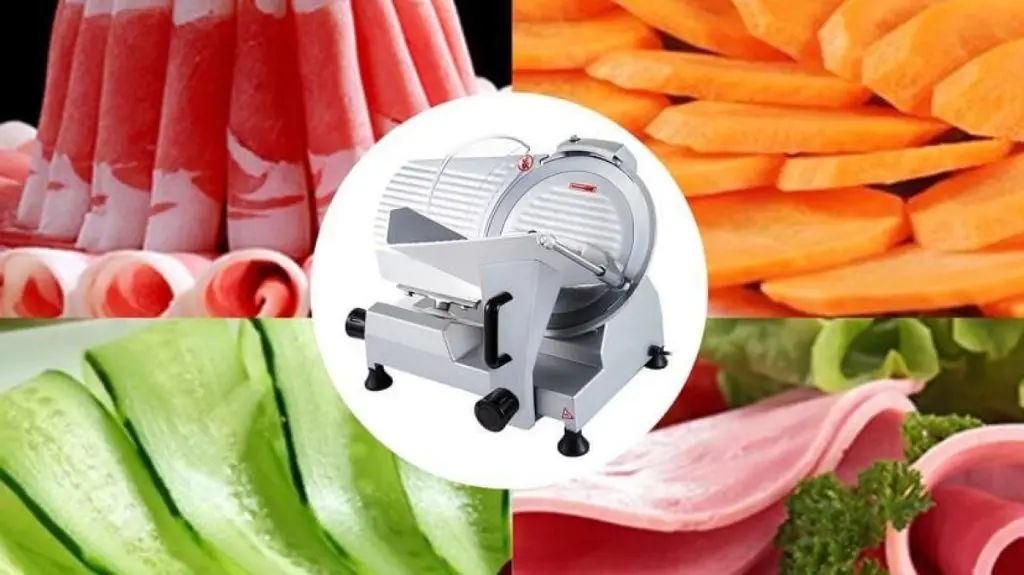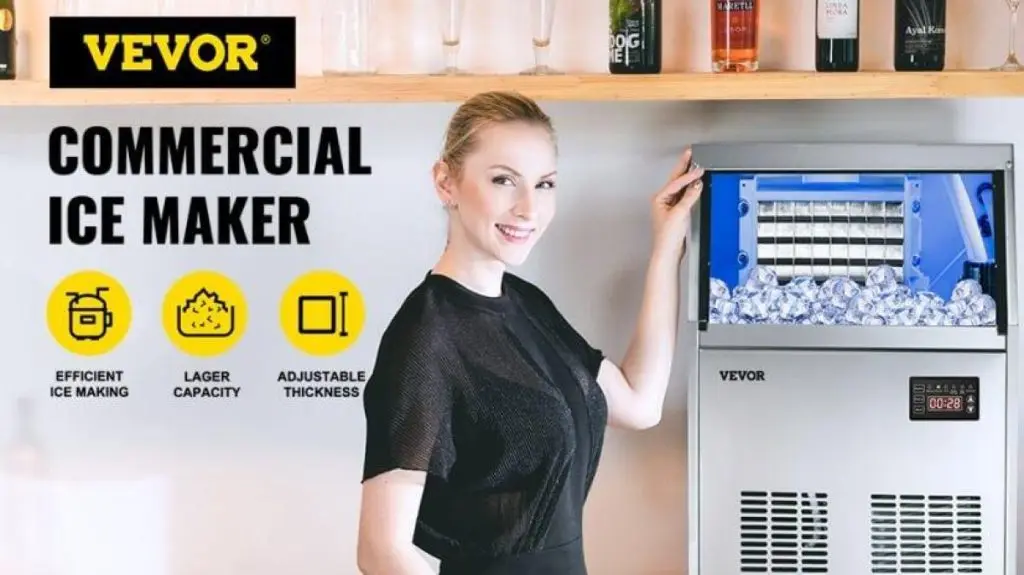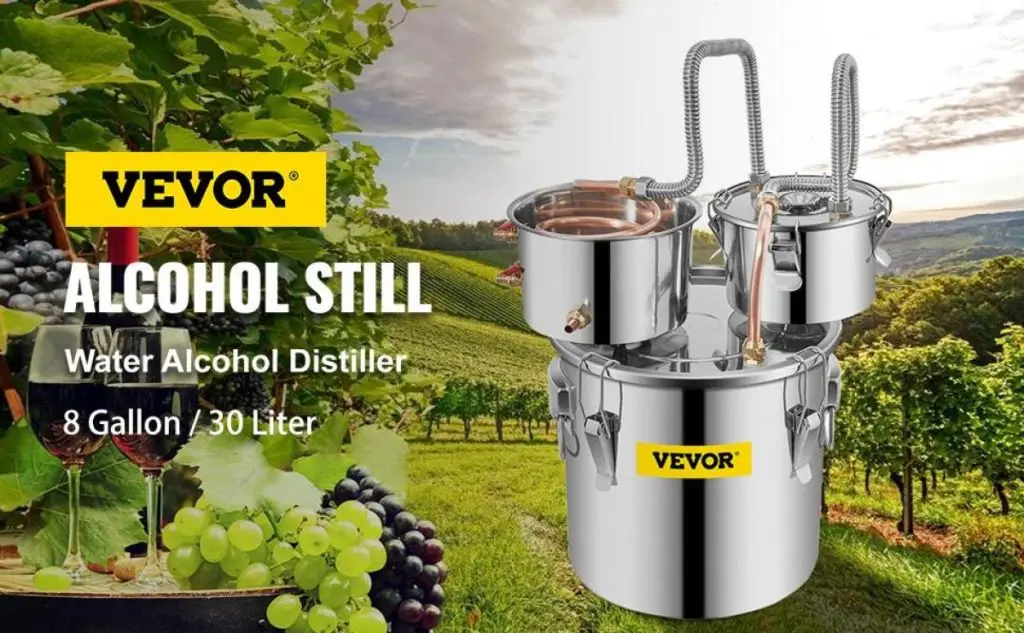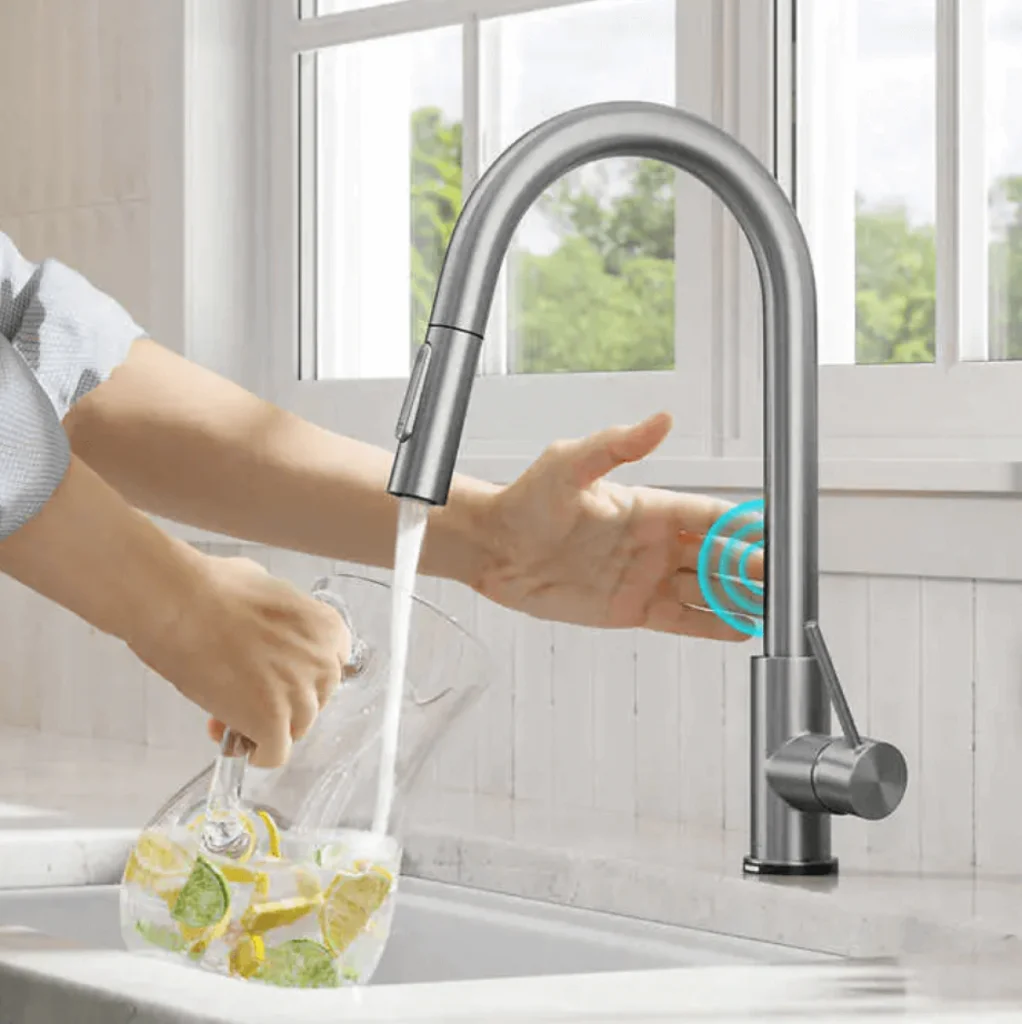Soup-making is a lot of work!
So, it is no wonder that many home chefs consider making larger batches to save time and effort. You enjoy a few bowls of soup with your family and put away the rest in the freezer to be used on the weekend.
Come the weekend; you take out the soup only to find that freezer burns have ruined your soup. Disappointed? Thinking of giving up on soup altogether?
Enter the magic trick for leftovers: vacuum sealing.
While you might have only heard of vacuum sealing veggies and fruits, to the surprise of many, vacuum sealing also works for liquids such as soup and stews.
In this comprehensive guide, We are going to share all about vacuum sealing soup—from why we should do it to gathering the necessary tools for it and learning how to do it step by step. We will also be offering some insightful tips for successful vacuum sealing and introducing you to VEVOR’s best vacuum sealer to vacuum seal soup.
Table of contents
Can You Vacuum Seal Soup?
Absolutely! You can vacuum seal soups and other liquid foods. While it is best to use a chamber vacuum sealer to vacuum seal liquids, with proper technique, you can also vacuum seal soup with a suction vacuum sealer.
While you might be thinking, “Won’t the soup get sucked into the machines?”
Well, It would if you are not doing it properly. But with simple adjustments and by following the proper technique, you can vacuum seal soup without any of it getting sucked into the machine and creating a mess.
Later in the article, we are going to provide an easy step-by-step guide to vacuum seal soup. So, continue reading!
Why Should I Vacuum Seal My Soup?
Here are some reasons why you should consider vacuum sealing soup before storing it in a fridge or freezer:
Extended shelf life—Vacuum sealing removes all the air from the container/sealer bag and slows down the oxidation process, allowing your soup to stay fresh and edible for an extended period.
Nutrients and flavors—Vacuum sealing also helps ensure that the nutrient and flavor profile of your soup remains intact over the extended storage period.
Preventing freezer burns—freezing soup without vacuum sealing would result in freezer burns—the soup is still edible, but it does not have the same flavor.
Time and effort saving—Imagine the time and effort you will save on making soup when you make large batches and store a few potions for later usage.
Ok, enough of the benefits of vacuum sealing; now let’s find out how you can go about vacuum sealing your soup.
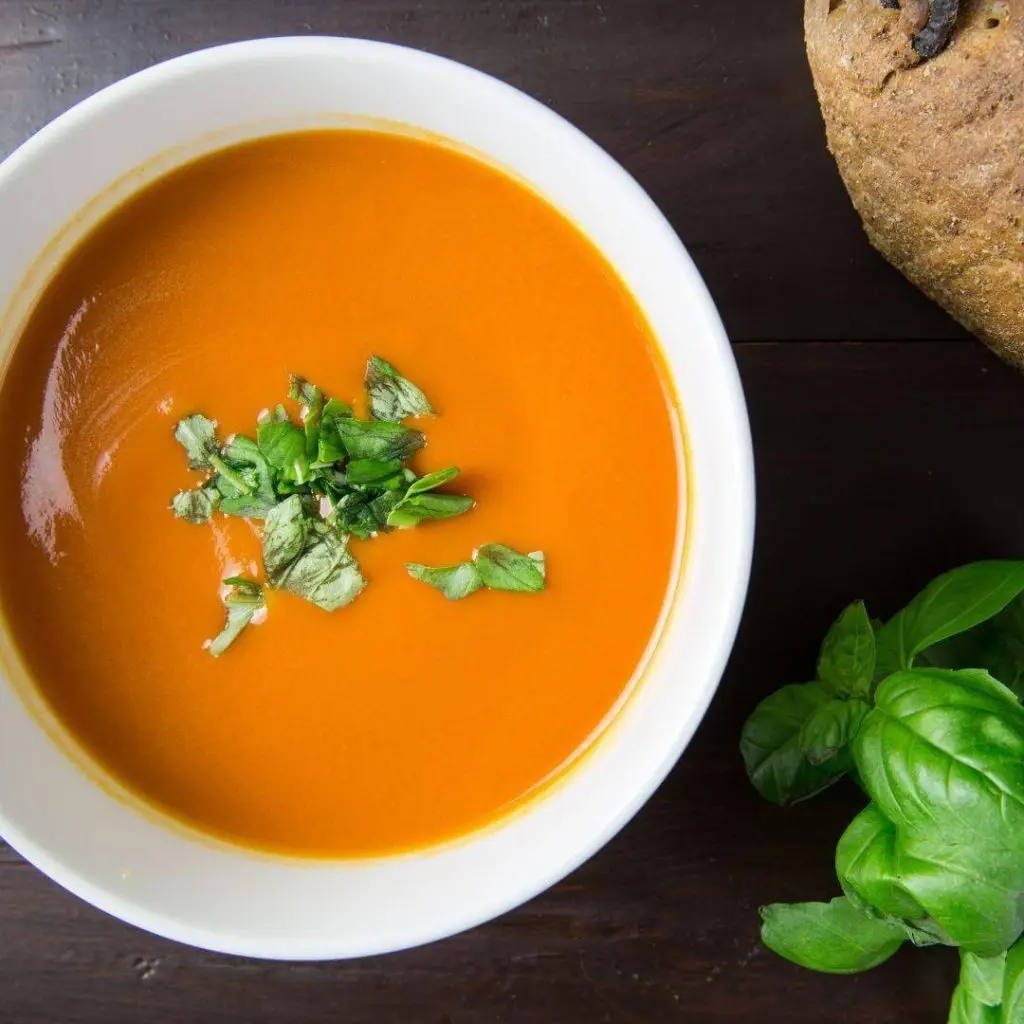
How to Vacuum Seal Soup? Step-by-Step Guide! (400 to 600)
Vacuum sealing soup or any other wet food might seem like a daunting task, but if you have a step-by-step guide to follow, things become manageable and easier. You can vacuum seal soup by following these easy steps:
Step 1: Gathering supplies
Before you begin vacuum sealing soup, gather all the tools and supplies for the job. You will need a vacuum sealer (chamber or suction), packaging material (bags/jars), labels, etc. When picking packaging, make sure that it is appropriate for vacuum sealing and is freezer-safe.
Step 2: Cooling and Portioning
Once you have gathered all the supplies, you need to let the soup cool down. This is imperative for effective sealing. Besides, hot food could also harbor bacteria. So ensure that the soup has properly cooled down, at least to the room temperature, before you proceed with the vacuum sealing process.
Besides cooling down, you will also need to divide the soup into manageable portions. Consider dividing into individual servings or other desired sizes.
Step 3: Filling the Packages (Sealer Bags/Canisters)
Pour the cooled soup into the vacuum sealer bags, jars, or canisters. Whatever packaging you are using, make sure that you leave ample room at the top for proper sealing and to provide space for expansion on freezing. Wipe the spills, if any, to keep things clean and to ensure perfect sealing.
Step 4: Vacuum Sealing Soup
Now, here is how you can vacuum seal your soup using a chamber and suction vacuum sealer.
- Using the Chamber Vacuum Sealer
Chamber vacuum sealers are the best for vacuum sealing soups and other liquids because, using these ones, there is no risk of liquid being sucked into the machine. When using a chamber vacuum sealer, you will place the package containing the soup inside its chamber.
What happens is that when you run the vacuum sealing process, the pressure decreases not only inside the sealer bag/canister but also inside the whole chamber. So, as there is no pressure difference, the liquid stays in the package and does not get sucked in.
Note: as the pressure level decreases in the chamber, so does the boiling point of the soup. So, if you were vacuum sealing hot soup, it could start boiling. Always cool down your soup before vacuum sealing.
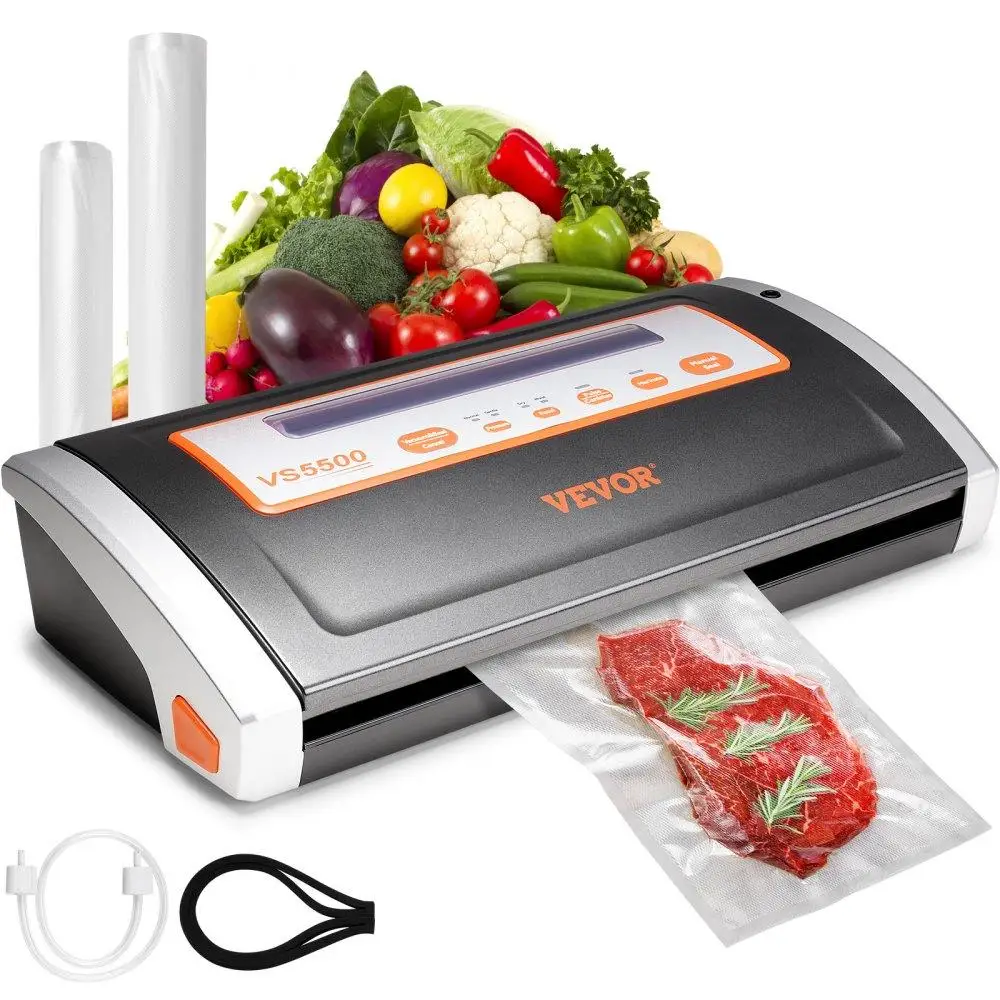
- Using a Suction Vacuum Sealer
When using a suction vacuum sealer, you will have to get a bit technical to prevent the vacuuming from sucking in the liquid. Here are a few ways to go about it:
Freezing the Soup
With this technique, you put the package containing the soup in the freezer and vacuum seal it once it has frozen. This ensures that you create an airtight and compact seal without causing a mess.
If you do not have to stand the packages upright, you can use the ice cube freezing method.
Ice Cube Method
In this method, instead of freezing the soup in the sealing bag, you pour it into an ice cube tray and freeze it. When frozen, pop out the cubes, put them in the sealer bag, and process them with vacuum sealing.
Putting Gravity to Work
In this method, you will have to hang the vacuum sealer bag over the edge of the counter while vacuum sealing. This hanging keeps the liquid at the bottom while air is sucked out. For this, you might need some helping hands for either holding or controlling the vacuum sealing process.
Step 5: Labeling And Storing
Once you have vacuum-sealed soup, double-check the seal and then label it with the type of soup and date of packaging. This helps you remember its contents and consume it within a reasonable timeframe. Once properly labeled, you can store the soup in a freezer or fridge.
Remember, the shelf life of the soup will depend on its storage conditions.
VEVOR Vacuum Sealer For All Your Vacuum Sealing Needs
Looking for a versatile vacuum sealer that can meet all your vacuum sealing needs?
Check out the VEVOR Multifunctional Vacuum Sealer Machine. It can be your perfect preservation partner and take care of all your vacuum sealing needs. Whether you need to vacuum seal Dry or wet items, it has got you covered with its dry and moist modes. Dealing with soft items such as strawberries and donuts? Use its normal pressure mode. It also features an external hose for vacuuming canisters and marinates.
It is equipped with a powerful suction pump with maximum suction power of 80 Kpa and has a 2.5 mm wide sealing strip. It creates perfect seals, ensuring your food remains fresh for extended periods.
It is also very easy to use and comes with a sealer bag roll that can be stored inside the machine. The vacuum sealer has a small but sharp cutter for effortlessly cutting sealer bags. It has a highly intuitive display, allowing you to manually control the pressure settings and vacuum sealing modes such as dry/moist, canister, and marinate.
When vacuum sealing soup or other wet products with it, do not forget to put it on moist mode.
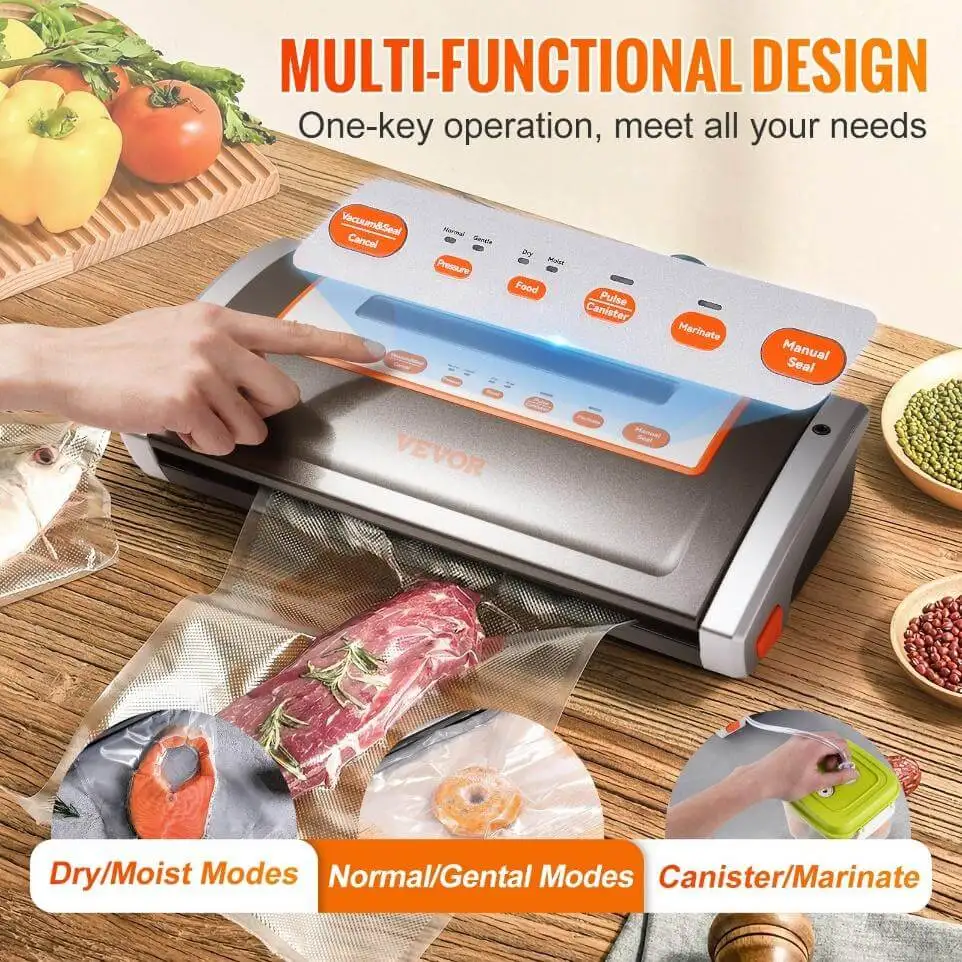
Tips for Vacuum Sealing Soup
Here are a few practical tips to help you effectively vacuum seal your soup:
- Concerned about the machine sucking in the liquid? Consider freezing it first in the sealer bag before vacuum sealing. You can also try the ice cube method.
- Use high-quality vacuum sealer bags or thick containers to prevent punctures and leakages.
- Do not overfill the sealer bag/container. Leave some extra space to accommodate the expansion that happens on the freezing of liquids.
- When thawing the soup, either be gentle. Either thaw it in the refrigerator or cold water.
- To optimize storage, use same-sized sealer bags.
- Dry packages before freezing them, or they may end up sticking together on freezing.
FAQS About Vacuum Sealing Soup
Q: Should I freeze soup before vacuum sealing?
If you are concerned about the vacuum sealer sucking in the liquid, you should consider freezing it. You can either simply freeze the soup in a vacuum sealer bag/canister or make its ice cubes and then vacuum seal it.
Q: How long will vacuum-sealed soup last?
While normally soup would last about 3 to 6 months in the freezer, when vacuum sealed, its shelf life is extended up to 1 to 2 years.
Q: Can you vacuum-seal warm soup?
No, you should never vacuum seal warm soup. Warm soup not only negatively affects the vacuum seal but could also harbor bacteria. So, make sure that the soup is at least at room temperature before vacuum sealing.
Conclusion
So, there you have it—your complete guide to vacuum sealing soup.
Now, you can make larger batches of soup with confidence, knowing that leftovers won’t go to waste.For effective vacuum sealing, consider getting your vacuum sealer from a reputable brand such as VEVOR. It has a wide collection of both suction and chamber vacuum sealers. Make sure that you pick the one that is multifunctional and will take care of all your vacuum sealing needs.


